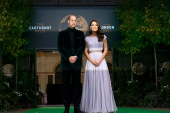
According to the latest news consumption report by Ofcom, TikTok has become a major and growing source of news for 10% of UK adults. Surprisingly, this figure matches the proportion of UK
adults who rely on The Guardian for their news, and it surpasses the numbers for BBC Radio 1 and Channel 5.
The rise in news consumption on the short-form video platform is indicative of the shifting trends in how news is being consumed, primarily driven by younger audiences. Among individuals aged 16-24, a staggering 71% claim to use social media for news, whereas only 53% prefer traditional broadcast TV, and merely 28% opt for print or online newspapers.
Delving deeper into this age group, the Ofcom report reveals that BBC One is the sole traditional media source that makes it to the top five news outlets, being consumed by 33% of young individuals. The remaining positions are dominated by social media platforms like Instagram (44%), Facebook (33%), Twitter (31%), and TikTok (29%). It is also concerning that 10% of UK individuals aged 16-24 claim to consume no news at all, twice the figure for all adults (5%).
This surge in news consumption through social apps among younger audiences may not come as a surprise, as the younger generation is known to be more tech-savvy. However, for those concerned about supporting reliable news organizations and upholding democracies, this shift in news consumption habits raises apprehensions.
Columnist and former BBC presenter, Raymond Snoddy, expressed his concerns on The Media Leader Podcast, stating that the focus must remain on trust, accuracy, and explanation to ensure the survival of legitimate democracies. He lamented that while it is challenging to change the preference of some individuals who prefer lighter content on platforms like TikTok, it is crucial to maintain a balance between informative and entertaining content.
As more young users flock to platforms like TikTok, news publishers are facing the challenge of meeting audiences where they are. Many organizations have devised strategies to engage audiences off-platform, acknowledging the need to cater to the preferences of the younger demographic.
TikTok's audience has a penchant for "light-hearted" content, including news, as highlighted by Ofcom and confirmed by a study from media agency Fanbytes by Brainlabs. To appeal to these users, newsbrands have attempted to adapt their coverage on TikTok, sometimes with awkward results. They have employed creators to add humor to their news and formulated tactics to capture users' attention within the first few seconds of a video, considering TikTok's extremely short attention span.
However, the report by Ofcom does not specify to what extent TikTok users are consuming news from established newsbrands' accounts versus individual influencers or other new media companies. This ambiguity raises concerns about fact-checking practices and standards, as a previous report from NewsGuard found that 20% of news-related videos on TikTok contained misinformation.
One underlying anxiety is that TikTok is owned by the Chinese company ByteDance, which raises questions about potential undue influence from the Chinese government. While TikTok has asserted its independence from such influence, the abundance of misinformation on the platform, combined with the younger generation's inclination for news avoidance, raises concerns about the future level of societal awareness and informed decision-making. Photo by Solen Feyissa, Wikimedia commons.







































